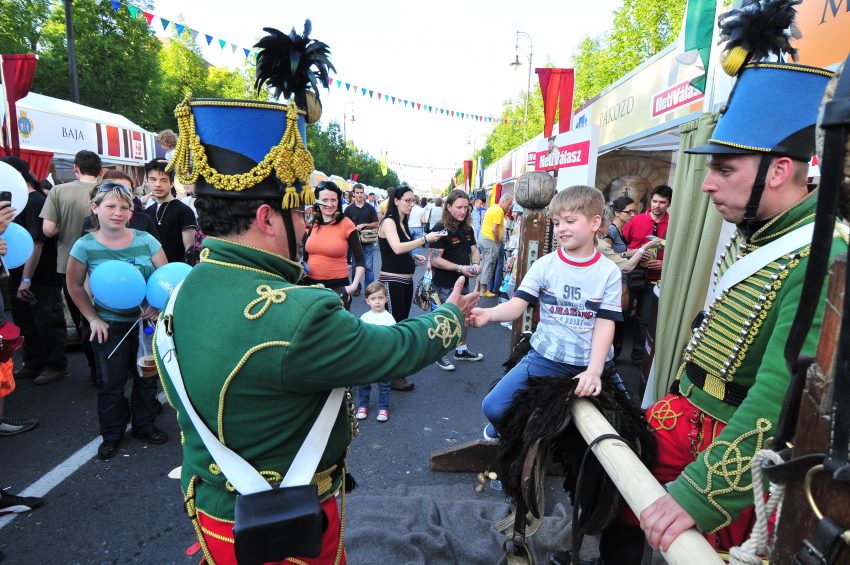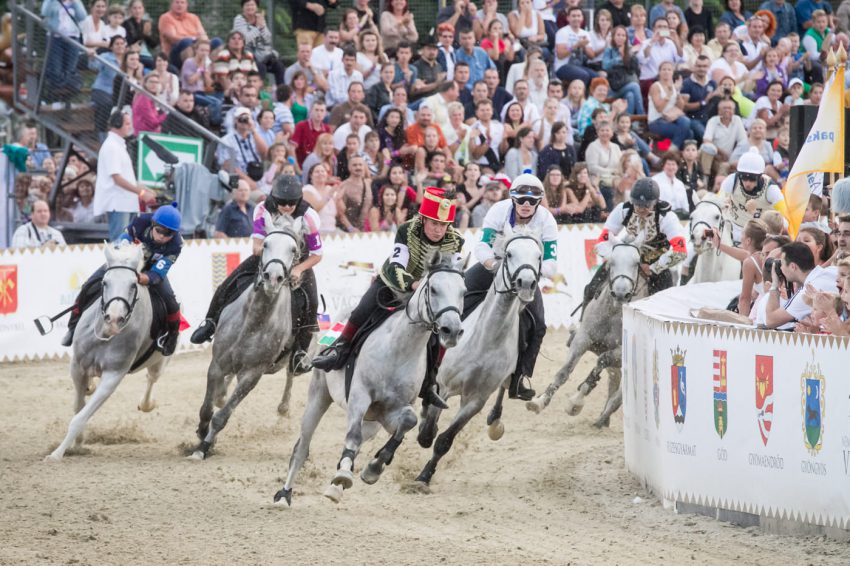Being one of the main equestrian events of the year, National Gallop offers a lot more than simple horse-riding competitions. Check out the list of events below to find out why you should turn up at Heroes’ Square between 14-16 September.
Little Hussars in the Saddle
This year children are in National Gallop’s focus of attention as they are on the road to become the greatest horsemen of our future. As part of National Gallop’s programs, Little Hussars’ Gallop is organized as a tradition. As little hussars, horse lover children between the age of 10-16 can compete on their fastest ponies, with the consent of their parents. They first need to showcase their riding skills in the qualifying races, the winners of which may continue competing at Heroes’ Square, and prove they are as good jockeys as their older counterparts.

Saddle Up, Hungary!
Before the final races in Budapest, the horsemen of the National Gallop will compete in regional qualifying races. Every year the season of qualifying races starts on 1 May with Sarkad Gallop and closes at the end of August with Kaposvár Gallop. The altogether 16-18 competitions are intertwined with other equestrian programs, preserving traditions, so that a day spent by the racetrack offers fun activities for the whole family.
Battle of Nations
By 2018 National Gallop’s International Race has grown into a tradition with participating nations that also promote the importance of horse riding as part of their culture. In the last 11 years all but one continent were represented by professional horsemen at the event. Just like Hungarian jockeys, the competitors of the International Race get in the saddle wearing their national costume to showcase their culture. This year it is a special honour to welcome one of the members of the Household Cavalry Regiment of the British Army, Mr. Owen Watkins among the competitors. Besides England and Hungary, Slovakia, Slovenia, Romania, Serbia, Austria, the Czech Republic, China, Mongolia, Turkey and Suriname will also take part in the Battle of Nations.

Modern History
At National Gallop competitors may race on horseback or horse-drawn carriages. New carriages were needed to be built for the carriage driving races as the Heroes’ Square racetrack is not adequate for traditional ones. For the first time in the world, modern vehicles built based on Scythian and Roman chariots are used at the races, making them a battle of history. The carriage driving races are not the only time these vehicles will be used at the event. The carriage pushing contest will be organized this year during which the qualifier teams will compare their strength and speed with the MTVA team first, then the wrestlers’ team and competitors from Kocs (a small town in the north-western part of Hungary) in the finals.
Horses as True Companions
Horse riding starts with getting to know the horse, your four-legged companion and future best friend. This process (including the body parts of a horse, how to care for them and saddle them up, etc.) will be demonstrated to all those who are interested in horse riding, yet view it from a decent distance. Popular actors, actresses, sportsmen and –women, who are horse lovers themselves will help bring these animals closer to all spectators.
Carriage Combat
This year’s National Gallop hosts a world premiere! A brand new competition conceptualized by the gallop’s organizers will take place at Heroes’ Square: three horse-drawn carriages will start the race from three different points of the racetrack, with the same distance from one another. The winner of the race is the carriage that manages to get the closest to or even overtake the carriage ahead of it. The time it takes each carriage to take three and a half rounds is measured and compared after the end of the race. The time difference may only be a few hundredths of a second, promising an exciting program for the viewers.

Gallop Corso
Andrássy út turns into a real cavalcade of people, colours and pavilions that present the participating settlements’ traditions. Taste the diverse flavours of Hungarian cuisine, buy souvenirs at the artisan stalls, get to know regional culture at the settlements’ units, and get familiar with traditional Hungarian costumes. This year visitors may as well meet performers from MTVA’s Fölszállott a páva talent show.
